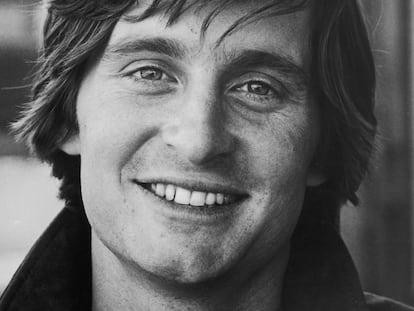No abs, no big biceps, no square jawline: Will the age of the ‘normal’ man ever return?
It is the moment of the gym bro. Don’t expect a less-chiseled physique to top the world’s sexiest lists of men any time soon
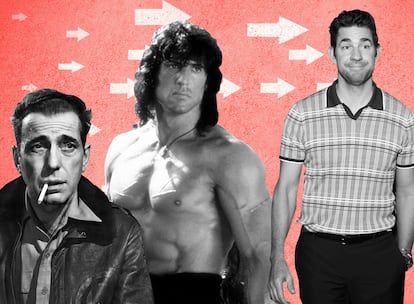
You can’t please everybody, even when it comes to sex symbols. And judging by social media reaction, the public is predictably split on the choice of actor and director John Kraskinski as the sexiest man of 2024 by People magazine. Critics of the decision are divided between those disappointed by the umpteenth white man in the sultry spot — another vote for the universal aspiration of whiteness — and those who question whether a 45-year-old dude with big ears who is developing a double chin was really the best choice the magazine could have made, given the existence of more canonical candidates like Glen Powell, the currently ubiquitous Paul Mescal, and Jonathan Bailey.
Perhaps to silence this latter segment, images from Michael Bay’s film 13 Hours: The Secret Soldiers of Benghazi, which came out all of eight years ago, have been making the rounds. In them, Krasinski shows off a torso so chiseled it puts the Farnese Hercules to shame. The message behind the shots’ rebirth is clear: at this point in the 21st century, ascent to the throne of male beauty requires a body honed by the gym (well, along with dietary and possibly hormonal supplements).
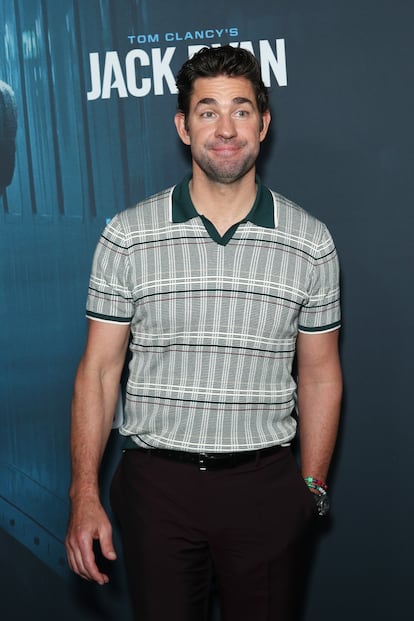
Last summer a video from the red carpet of the Venice Film Festival was circulated widely in which another actor, a tuxedo-clad Aaron Taylor-Johnson (34 years old), vamped for the cameras in a labored interpretation of the ultimate sex icon. According to some commentators, this performance was part of his bid to be the next James Bond after Daniel Craig (56) stepped down. The clip illustrates to a tee how the concept of male superlativity has evolved. The volume of Taylor-Johnson’s forearms threatens to burst the seams of his jacket. This would have been considered incompatible with any ideal of elegance throughout the last century, and certainly would have precluded one from the 007 running. Indeed, the first and best-known of all Bonds of yesteryear, Sean Connery, exhibited a harmoniously athletic physique, and those who followed (Roger Moore, George Lazenby, Timothy Dalton and Pierce Brosnan) were rather lanky. It wasn’t until the advent of the Craig era, which took hold with 2006′s Casino Royale, that a new paradigm became apparent.
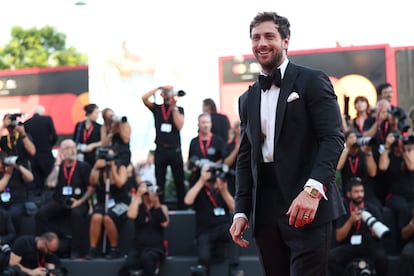
To many, today’s gym-bro-driven, bulk-obsessed moment has become associated with the conservative ideology that triumphed in the recent U.S. presidential elections. The takeover of American commercial cinema by superhero franchises — forever ruled by the Nietzschean Übermensch archetype — seems to confirm that male beauty ideals have shifted towards the swole. On press tours, blockbuster actors like Paul Mescal and Pedro Pascal, co-stars in the recently released Gladiator II, constantly answer questions about the training routines they used to prepare for their roles. Of course, nowadays, it’s unnecessary to pay for a movie ticket or a glossy showbiz magazine to gaze upon this kind of hyper-bulked male body that one rarely saw a few years ago: even a cursory review of social media reveals the extent to which it has become the reigning trend.
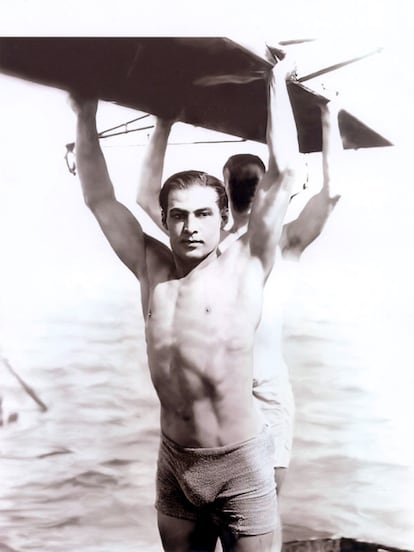
If we take it back to the beginning, two of the first Hollywood male sex symbols, Rodolfo Valentino and his successor Ramón Novarro, had torsos admittedly beyond the reach of the average man. But it is also true that today, given the current state of affairs, Valentino would be seen as an average guy on screen. Likewise, in 1934 Clark Gable caused fainting spells when he took off his shirt in It Happened One Night, but he did so with a pair of pecs that might be considered unremarkable by 2024 standards. The cinematic male physiques that were to follow — with certain exceptions, as in the various incarnations of Tarzan and the gladiators of the Italian péplum subgenre — would largely remain tucked away under clothing. Studs like Cary Grant, Gary Cooper and James Stewart were fit, sure — but they were much more charming with their ties and tailored suits than without them.
By the time burly Charlton Heston and Burt Lancaster were all the rage, it was clear that six packs were far from male movie stars’ minds. In the mid 20th century, it was perfectly acceptable for men with unassuming physiognomies like Robert Mitchum, Spencer Tracy and Humphrey Bogart to play romantic leading men. A representative case is Bogart in Casablanca (1942). While his romantic interest in the film, Ingrid Bergman, was a woman of sublime beauty, as was Lauren Bacall, his off-screen better half with whom he starred in five films, Bogart had fairly run-of-the-mill looks. Many things change, but this remains: actresses will always be subjected to different standards.

Soon after, Marlon Brando became a sexual sensation thanks to his gym bod in A Streetcar Named Desire (1951), with his physical appearance underlining the brutality that dominated his character’s psychological profile. The slim and easy Paul Newman and Steve McQueen were better known for their style, which came to define U.S. counterculture. Meanwhile in Europe, Marcello Mastroianni was assigned to the Latin lover stereotype, thanks to his Mediterranean everyman physique. In 1970s France, a young idol by the name of Gérard Depardieu appeared on the scene. He’d surely be regarded as overweight by today’s exacting standards.
History does seem to give credence to the theory that muscles pop in conservative times. Perhaps then, it is no coincidence that during the 1980s’ Reagan era, Hollywood was dominated by an action hero typology characterized by exaggerated musculature, from Sylvester Stallone to Arnold Schwarzenegger and Dolph Lundgren. But that’s not to say that all era stars hewed to this path. William Hurt, Kevin Costner, Bruce Willis and even the slightly more built-out Mel Gibson and Richard Gere were far from musclemen. By the turn of the 21st century, in Anthony Minghella’s adaption of The Talented Mr. Ripley, Jude Law was playing the beautiful Dickie Greenleaf with a dazzling display of charisma, but lacking any body type you’d be likely to see at the CrossFit studio. One suspects that today, Law would have been sent directly to the gym before filming.
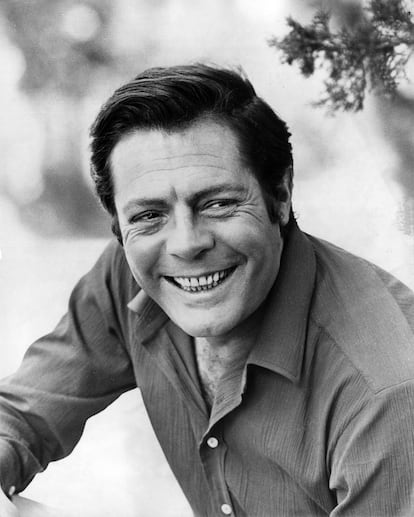
People has published its list of most attractive men since 1985. The rundown has become an expression of the prevailing notion of male beauty, with Law, George Clooney, Hugh Jackman, Channing Tatum, Idris Elba and Michael B. Jordan all occupying the winner’s podium at different moments during the last two decades. In recent times, it has had to work to address concerns over its racism and ageism. But it seems that the magazine’s commitment to heterosexuality is a non-negotiable — as are protruding pecs and biceps, today. Gone are the days when Serge Gainsbourg, François Truffaut, Miles Davies, David Bowie and Tony Leung were our image of men’s style and elegance.
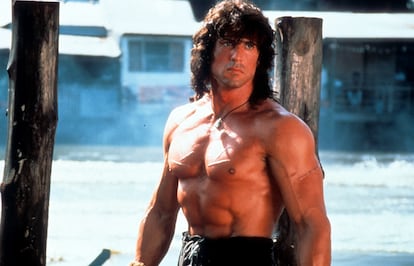
Another sign of the times appears to be body fat percentage. Just ask Brendan Fraser, who went from certified hot guy to character actor when he gained weight, many years before he leaned into the fat-man image with 2022′s The Whale. It seems unlikely that performers like Sean Austin, Denis Ménochet and Hovik Keuchkerian will ever be able to aspire to sex symbol consideration (that which leads to leading man roles and multi-million contracts with fashion and perfume brands), despite their large fanbases — though needless to say, fatphobia is an even bigger concern among actresses.

We might also look for a sign of this phenomenon to the 2012 adaptation of Tolstoy’s Anna Karenina directed by Joe Wright, in which Taylor-Johnson himself played Count Vronsky, the story’s romantic lead. In the 1935 version, the role was played by Frederic March, a not particularly athletic 40-something. In Wright’s take, the role of Aleksei Karenin, the gray, middle-aged officer whose wife cheats on him, is played by Law, the same actor who had embodied masculine beauty and elegance in The Talented Mr. Ripley. Between those two roles had passed just 13 years. And a change in guard.
Sign up for our weekly newsletter to get more English-language news coverage from EL PAÍS USA Edition
Tu suscripción se está usando en otro dispositivo
¿Quieres añadir otro usuario a tu suscripción?
Si continúas leyendo en este dispositivo, no se podrá leer en el otro.
FlechaTu suscripción se está usando en otro dispositivo y solo puedes acceder a EL PAÍS desde un dispositivo a la vez.
Si quieres compartir tu cuenta, cambia tu suscripción a la modalidad Premium, así podrás añadir otro usuario. Cada uno accederá con su propia cuenta de email, lo que os permitirá personalizar vuestra experiencia en EL PAÍS.
¿Tienes una suscripción de empresa? Accede aquí para contratar más cuentas.
En el caso de no saber quién está usando tu cuenta, te recomendamos cambiar tu contraseña aquí.
Si decides continuar compartiendo tu cuenta, este mensaje se mostrará en tu dispositivo y en el de la otra persona que está usando tu cuenta de forma indefinida, afectando a tu experiencia de lectura. Puedes consultar aquí los términos y condiciones de la suscripción digital.
More information
Archived In
Últimas noticias
Imelda Castro, the woman who wants to rule the cartel battleground of Sinaloa
The new victims of the Republican war on Obamacare: Millions hit by soaring health insurance premiums
A country divided on migrant rights: Some US states expand protections while others restrict them
Venezuela authorizes the release of another 87 political prisoners
Most viewed
- David King, chemist: ‘There are scientists studying how to cool the planet; nobody should stop these experiments from happening’
- Reinhard Genzel, Nobel laureate in physics: ‘One-minute videos will never give you the truth’
- Oona Chaplin: ‘I told James Cameron that I was living in a treehouse and starting a permaculture project with a friend’
- Sinaloa Cartel war is taking its toll on Los Chapitos
- The Interoceanic Train, the Mexican alternative to the Panama Canal


